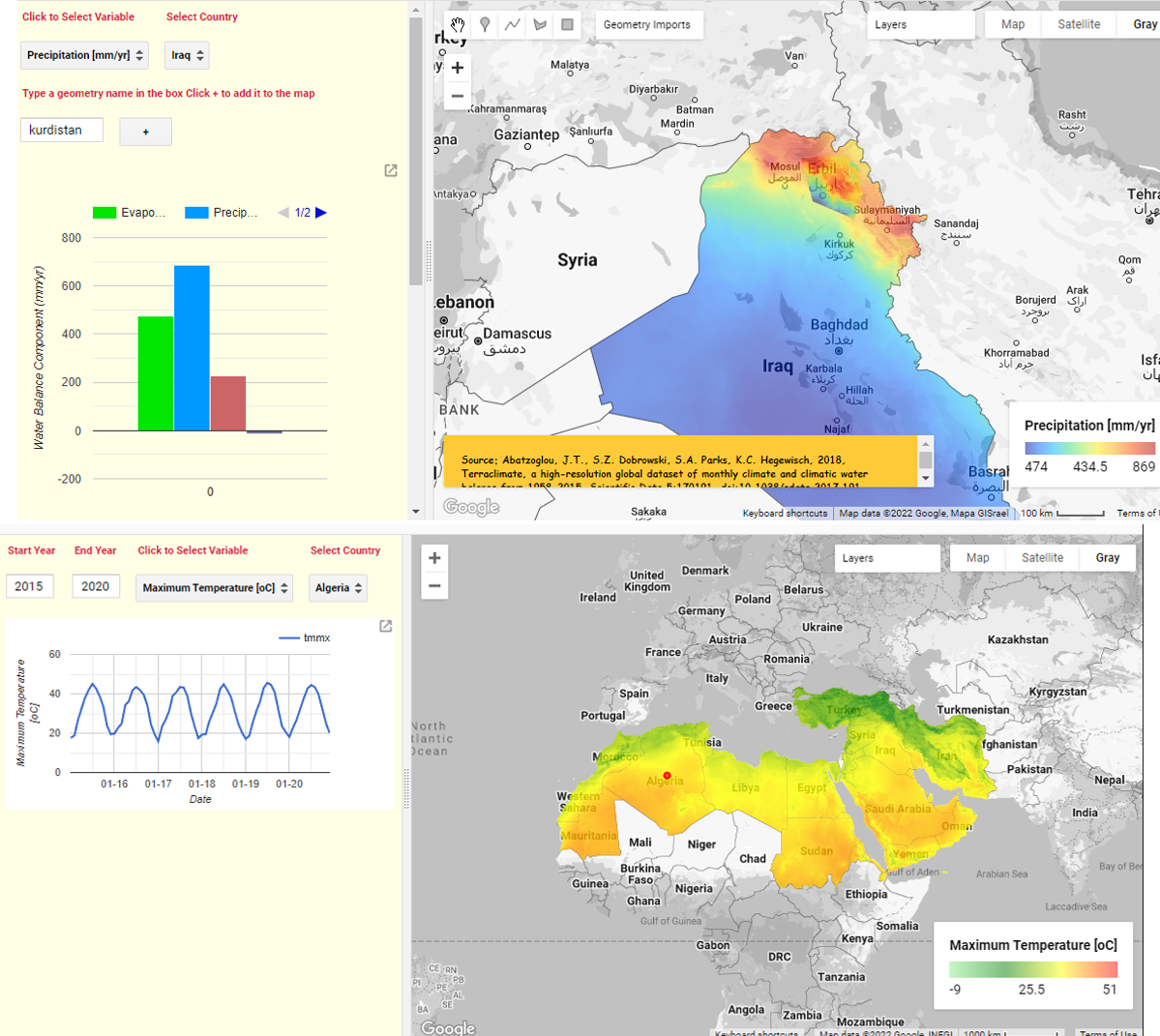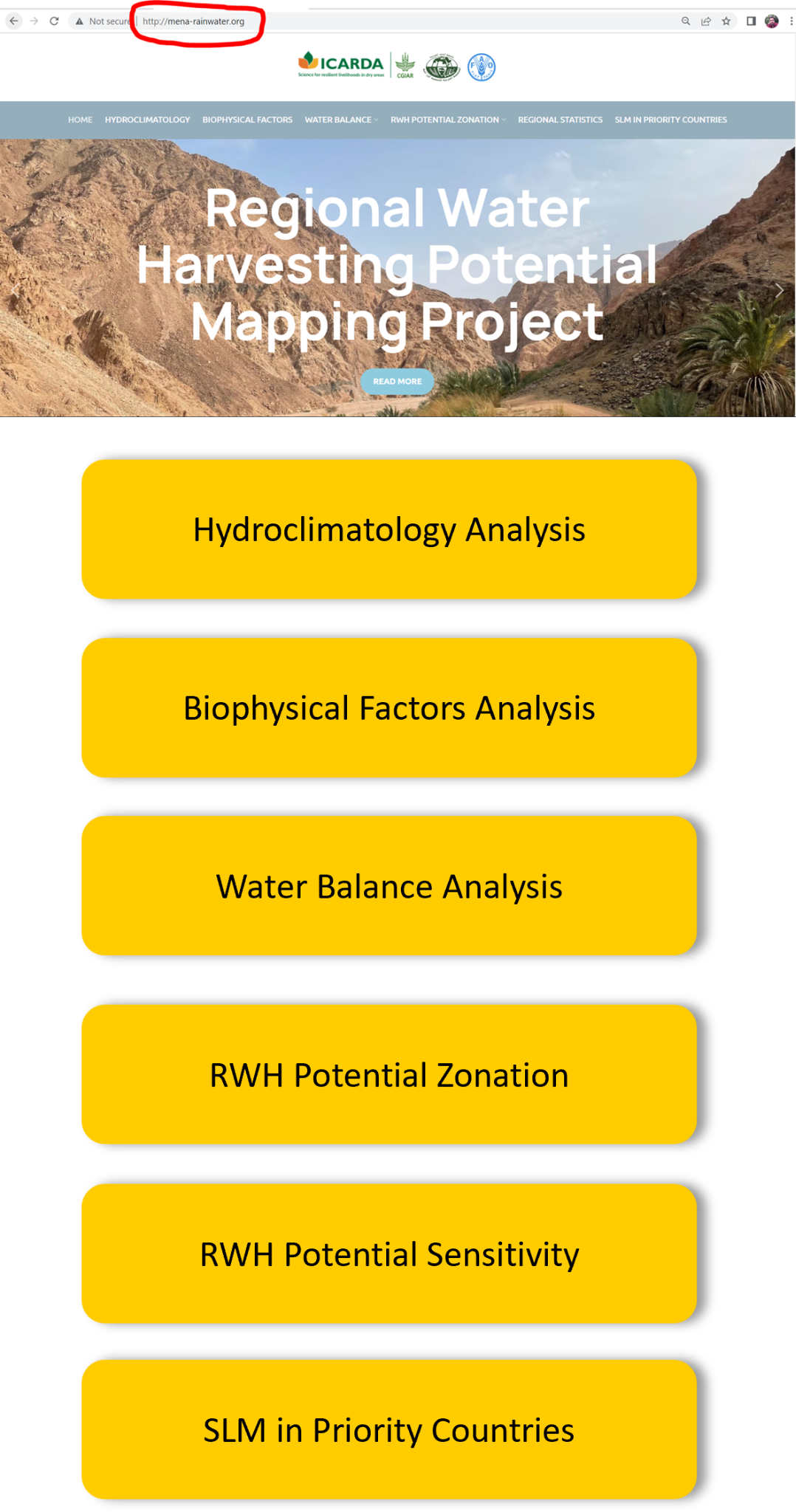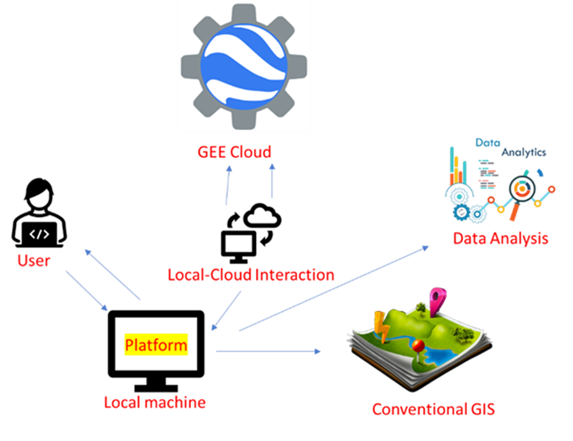Regional Rain Water Harvesting Potential Mapping Platform
Drylands cover nearly half of terrestrial land surfaces, with 72% in developing nations and providing housing for over 25% of the world's population. They are the primary source of fruit trees and food production, but water scarcity severely limits agricultural productivity, especially in remote areas lacking development and where expensive irrigation projects are unheard of. Reducing water stress and increasing agricultural output through efficient use of rainwater through rainwater harvesting technologies (RHTs) could help achieve Sustainable Development Goals, including SDG 2, SDG 6, and SDG 15. Enhancing rainfall utilization in farming is crucial to guarantee sustainable food production for the expanding global population. The United Nations General Assembly has proclaimed 2021-2030 as the "Decade on Ecosystem Restoration," recognizing and mandating the restoration of damaged ecosystems as a critical strategy to combat climate change, improve biodiversity, food security, and water availability. A task named "Assessment of water-harvesting scaling-up potential for the NENA Region" was assigned to ICARDA under the FAO regional project "Implementing the 2030 Agenda for water efficiency/productivity and water sustainability in NENA countries" (WEPS-NENA), funded by the Swedish International Development Cooperation Agency (SIDA).
A web-based platform was created to evaluate and map possible water harvesting zones in the NENA region using Google Earth Engine tools and recent advancements in machine learning and cloud computing capacity. The platform is made up of six extensive modules that aid in mapping the RWH potential, allowing users to execute spatio-temporal analytics and download data for operational use. This multi-criteria mapping and analytical assessment will help identify hotspots for rangeland restoration with different SLM practices and area development activities in low rainfall areas. ICARDA and FAO collaborated with the Arab Organization for Agricultural Development (AOAD) to engage and to have a dialogue with stakeholders to strengthen the regional approach and the dissemination of results.
In this context, the consortia (ICARDA-AOAD-FAO) held a regional stakeholder consultation on June 12th 2022, and trained the stakeholders on how to use this platform and get the necessary feedback from the regional stakeholders (close to 125 stakeholders participated in this training program). We gathered the feedback from the stakeholders on how to further improve this platform. The idea was to engage with the stakeholder to co-develop this platform. We got several constructive feedback which were used to further improve this platform. Following this, a second regional stakeholder consultation was held on 5th September 2022 where we also had extensive deliberations from the stakeholders (particularly from Jordan, Sudan and Palestine). We developed e-learning materials on how to use the web-based tool. The step-by step procedures associated with each module of the web-based platform is meticulously described. To enhance the regional approach and outcomes dissemination, ICARDA and FAO conducted stakeholder engagement and debate. The project aims to meet Goal 6.4 of the Sustainable Development Goals, which states that by 2030, "substantially increase water-use efficiency across all sectors and ensure sustainable withdrawals and supply of freshwater to address water scarcity and substantially reduce the number of people suffering from water scarcity." The project's outcomes will address SDG 6.4 and act as a catalyst for the accomplishment of other objectives, supporting FAO Strategic Objective 2 (Improve the productivity and sustainability of agriculture, forestry, and fisheries).



